Birth of A Nation, Stars, Reviews
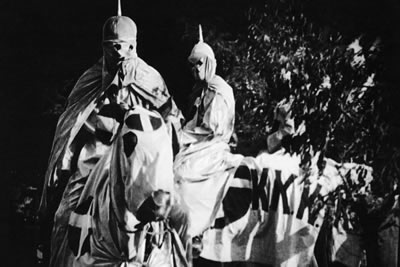 Birth of a Nation released in 1915
Birth of a Nation released in 1915
Directed by D. W. Griffith
Cinematography: G. W. (Billy) Bitzer
Birth of a Nation, originally titled The Clansman was first a novel, released in 1905, and then a play, performed in 1906.
Staring:
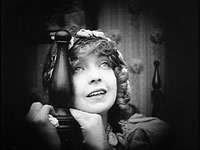 Lillian Gish (1893-1993), Elsie Stoneman. Gish
was part of Griffith's team since 1912 and had already made about 25
films with him before Birth of a Nation. She went on to star
in additional Griffith films as well as films from other directors.
She is remembered as one of the most important actors of the silent
era. However, her career extended into the modern epoch.
She appeared frequently on television and her last film, The
Whales of August was made in 1987 when Gish was 93. Gish's politics tended toward the reactionary. In the 1930s she was a vocal supporter of the xenophobic America First Committee (AFC). The AFC tried to prevent America's entry into World War II and was often fairly open in its praise of Nazi Germany. Gish appeared with the AFC's leader Charles Lindbergh, who had received the Service Cross of the German Eagle from Hermann Goering himself in 1936. Gish remained close to Griffith and never distanced herself from her role in BOAN. Bowling Green State University in Ohio had a theater named after Gish and her sister Dorothy. They had grown up in Ohio but were not alumna of the university. In 2019, amid student protest, the university stripped the Gish's name from the building. Numerous Hollywood stars signed a letter protesting the action but the university pointed out that in a 1983 interview Gish said: "I feel strongly that actors and actresses today need to take responsibility for what they say and do in film, even if they are only acting. They don’t have to do the script … Film is the most powerful thing that has been invented in this century."
Lillian Gish (1893-1993), Elsie Stoneman. Gish
was part of Griffith's team since 1912 and had already made about 25
films with him before Birth of a Nation. She went on to star
in additional Griffith films as well as films from other directors.
She is remembered as one of the most important actors of the silent
era. However, her career extended into the modern epoch.
She appeared frequently on television and her last film, The
Whales of August was made in 1987 when Gish was 93. Gish's politics tended toward the reactionary. In the 1930s she was a vocal supporter of the xenophobic America First Committee (AFC). The AFC tried to prevent America's entry into World War II and was often fairly open in its praise of Nazi Germany. Gish appeared with the AFC's leader Charles Lindbergh, who had received the Service Cross of the German Eagle from Hermann Goering himself in 1936. Gish remained close to Griffith and never distanced herself from her role in BOAN. Bowling Green State University in Ohio had a theater named after Gish and her sister Dorothy. They had grown up in Ohio but were not alumna of the university. In 2019, amid student protest, the university stripped the Gish's name from the building. Numerous Hollywood stars signed a letter protesting the action but the university pointed out that in a 1983 interview Gish said: "I feel strongly that actors and actresses today need to take responsibility for what they say and do in film, even if they are only acting. They don’t have to do the script … Film is the most powerful thing that has been invented in this century."
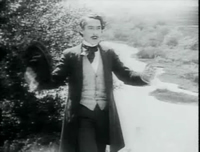 Henry B. Walthall (1878-1936), Ben Cameron. Walthall was the genuine article for this part. He was born on his family's Alabama plantation. His father had been a captain in the Confederate Army, and he had enlisted in the army during the Spanish American War (he spent the whole time sick in Florida). Walthall's first
film was 1908's Rescued from an Eagles Nest in which Griffith
also appeared as an actor. Thus, he was with Griffith from the latter's earliest days.
He had appeared in almost 200 films by the time of BOAN. BOAN makes Walthall famous and critics acclaim him the greatest film actor of his age. He goes on to play in well over 100 additional roles until 1934.
Henry B. Walthall (1878-1936), Ben Cameron. Walthall was the genuine article for this part. He was born on his family's Alabama plantation. His father had been a captain in the Confederate Army, and he had enlisted in the army during the Spanish American War (he spent the whole time sick in Florida). Walthall's first
film was 1908's Rescued from an Eagles Nest in which Griffith
also appeared as an actor. Thus, he was with Griffith from the latter's earliest days.
He had appeared in almost 200 films by the time of BOAN. BOAN makes Walthall famous and critics acclaim him the greatest film actor of his age. He goes on to play in well over 100 additional roles until 1934.
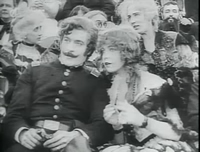 Elmer Clifton (1890-1949) Philip Stoneman. Clifton had been in films since 1912. He was a protege of Griffith and acted as his production assistant. Griffith also used him in Intolerance. Clifton leaves acting in 1919 to pursue his career as a director (he had started directing in 1915). He becomes known as a director of low budget westerns (he also directed Assassin of Youth (1937) an anti-marajuana film).
Elmer Clifton (1890-1949) Philip Stoneman. Clifton had been in films since 1912. He was a protege of Griffith and acted as his production assistant. Griffith also used him in Intolerance. Clifton leaves acting in 1919 to pursue his career as a director (he had started directing in 1915). He becomes known as a director of low budget westerns (he also directed Assassin of Youth (1937) an anti-marajuana film).
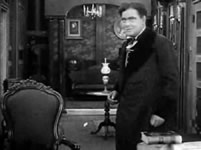 George Seigmann (1882-1928), Silas Lynch. Born in New York City, Seigmann appeared
in movies starting in 1908. He worked with Griffith and many
other directors. He also appears in Intolerance. In total, he performed in over 100 films. He frequently played the villain. Seigmann plays Lynch in blackface. Here's what he looked like out of makeup.
George Seigmann (1882-1928), Silas Lynch. Born in New York City, Seigmann appeared
in movies starting in 1908. He worked with Griffith and many
other directors. He also appears in Intolerance. In total, he performed in over 100 films. He frequently played the villain. Seigmann plays Lynch in blackface. Here's what he looked like out of makeup.
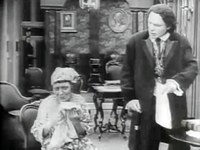 Ralph Lewis (1872-1937) Austin Stoneman. Appeared in more than 150 films starting in 1912. He was a frequent collaborator with Griffith. He'd worked with Griffith on several shorts before Birth of a Nation and went on to work on Intolerance (1916) and then on several of Griffith's less successful later films. In the trivia department, he died after being hit by a car driven by a chauffeur from Warner Brothers.
Ralph Lewis (1872-1937) Austin Stoneman. Appeared in more than 150 films starting in 1912. He was a frequent collaborator with Griffith. He'd worked with Griffith on several shorts before Birth of a Nation and went on to work on Intolerance (1916) and then on several of Griffith's less successful later films. In the trivia department, he died after being hit by a car driven by a chauffeur from Warner Brothers.
The Music of Birth of a Nation.
Of course Birth was a silent film. However, like many films of its era it was distributed with a suggested musical score. In the case of Birth the score, created by Joseph Carl Breil (1870-1926) was revolutionary. First, it was, of course, a full three hours long. To create the score, Breil adapted a series of pieces of classical music, most famously Wagner's "Ride of the Valkyries" which is used to accompany scenes of the klan. He also used many traditional American folk songs such as "Old Folks at Home" which he linked to positively portrayed values of the Cameron family. Finally, he wrote numerous original pieces. Most of these were leitmotifs (recurrent musical themes) that accompanied the appearance of specific characters. The most famous is called "The Perfect Song" and is played during romantic scenes between Ben Cameron and Elsie Stoneman. You can hear it here. Sheet music for "The Perfect Song" was sold in advance of the appearance of the film (in those days selling sheet music was huge business) and this may be the first time film music was marketed. For reasons that are not clear to me, a different score by a different composer, Carli Elinor, was used in early West Coast performances. That score is lost. "The Perfect Song" later became the theme for the Amos and Andy radio show. If you'd like a little extra credit, you can write me a 50-100 word paper in which you tell me why it is so appropriate that the song would be used for the radio Amos and Andy. Title your file Amos and Andy and upload it to Canvas Practice. You must submit your paper by the day of the first exam. Please note that this is an Easter egg for students who bother to read carefully and on time. This only works if you don't tell your classmates about it and don't ask me about it in class (if you do I'll deny any knowledge). It won't show up officially in grade book but the points will be added to your grade. If you want to talk to me about it, please either come by my office or send me an email.
Reviews:
A 1915 Review from Variety (optional)
Roger Ebert's 2003 review (required)
Next: Read about Thomas Dixon Jr. and The Clansman